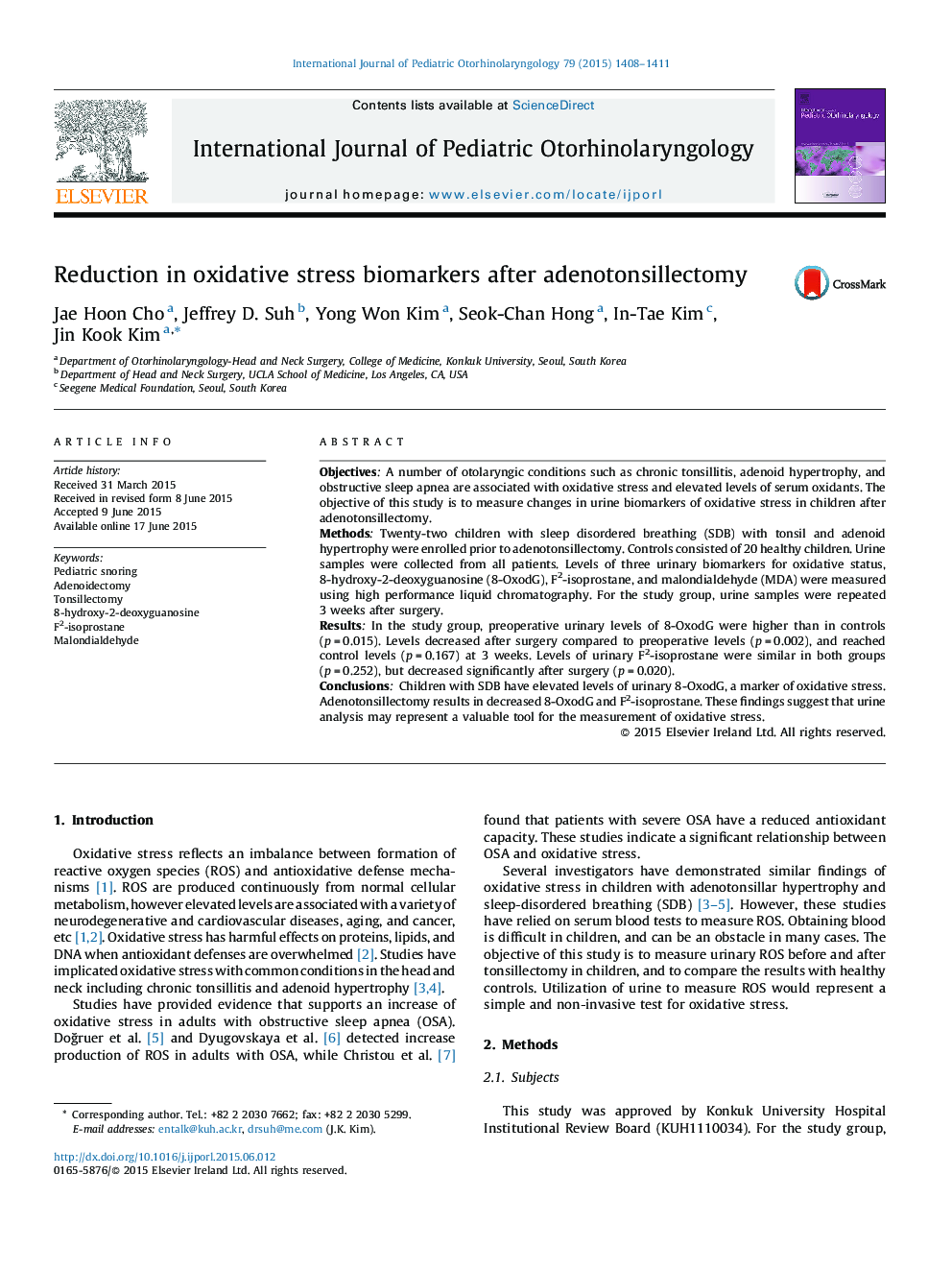| Article ID | Journal | Published Year | Pages | File Type |
|---|---|---|---|---|
| 4112080 | International Journal of Pediatric Otorhinolaryngology | 2015 | 4 Pages |
ObjectivesA number of otolaryngic conditions such as chronic tonsillitis, adenoid hypertrophy, and obstructive sleep apnea are associated with oxidative stress and elevated levels of serum oxidants. The objective of this study is to measure changes in urine biomarkers of oxidative stress in children after adenotonsillectomy.MethodsTwenty-two children with sleep disordered breathing (SDB) with tonsil and adenoid hypertrophy were enrolled prior to adenotonsillectomy. Controls consisted of 20 healthy children. Urine samples were collected from all patients. Levels of three urinary biomarkers for oxidative status, 8-hydroxy-2-deoxyguanosine (8-OxodG), F2-isoprostane, and malondialdehyde (MDA) were measured using high performance liquid chromatography. For the study group, urine samples were repeated 3 weeks after surgery.ResultsIn the study group, preoperative urinary levels of 8-OxodG were higher than in controls (p = 0.015). Levels decreased after surgery compared to preoperative levels (p = 0.002), and reached control levels (p = 0.167) at 3 weeks. Levels of urinary F2-isoprostane were similar in both groups (p = 0.252), but decreased significantly after surgery (p = 0.020).ConclusionsChildren with SDB have elevated levels of urinary 8-OxodG, a marker of oxidative stress. Adenotonsillectomy results in decreased 8-OxodG and F2-isoprostane. These findings suggest that urine analysis may represent a valuable tool for the measurement of oxidative stress.
